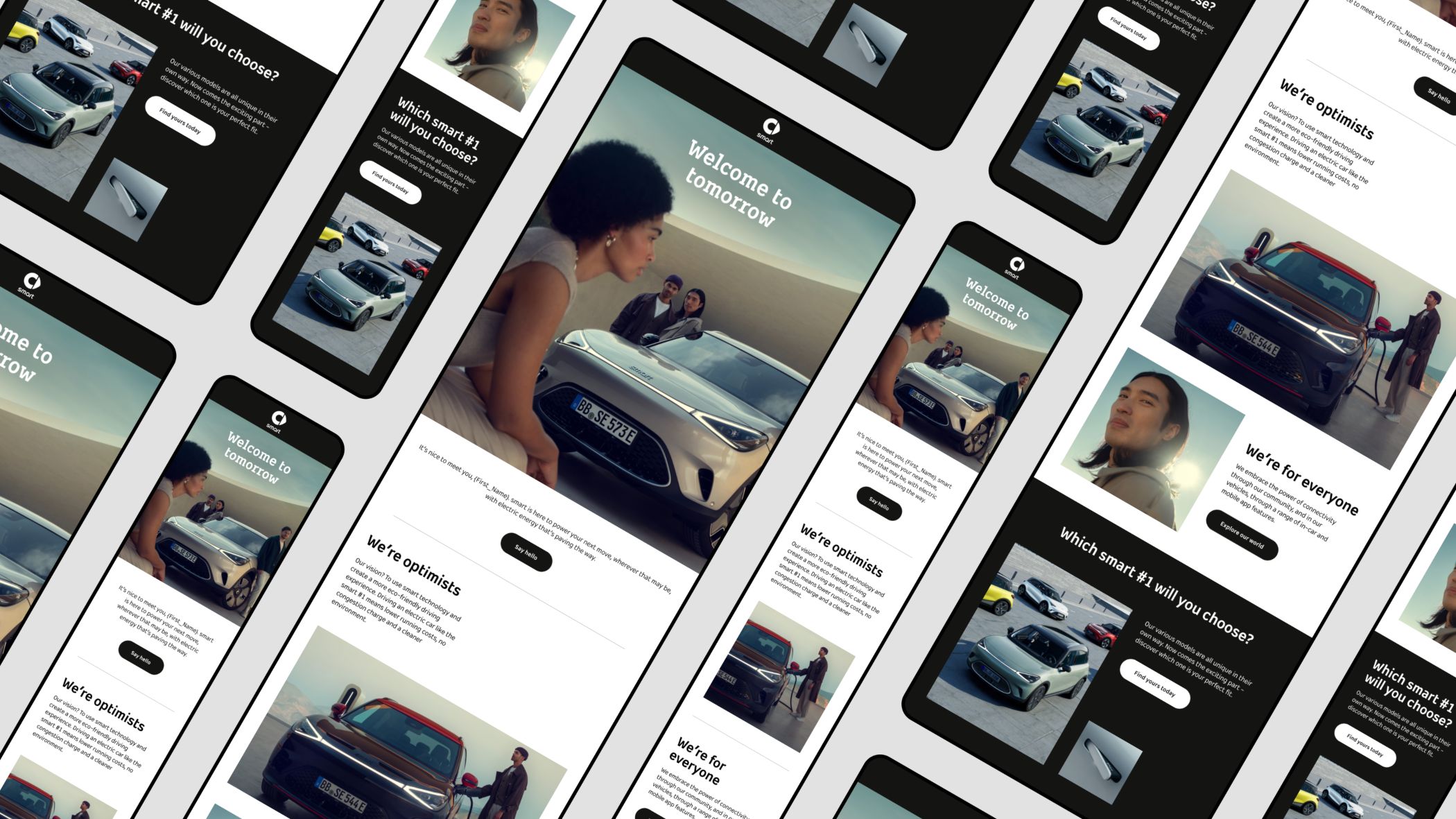Mastering brandformance with DEPT® x Google
As consumers have endless choices, successfully engaging and retaining them demands more than fleeting wins.
While a viral video or targeted retail media campaign may lead to a short-term sales spike, these activities on their own won’t sustain brand growth.
This is where “brandformance” comes in: a strategy that fuses brand-building with performance marketing to create a full-funnel approach that delivers value today and builds loyalty for tomorrow.
Brandformance isn’t just about squeezing out quick returns; it’s about balancing immediate revenue with brand longevity. Think of it as a two-way investment—boosting short-term impact while making sure your brand stays top of mind long after the sale. By creating a seamless experience across the funnel, a brandformance approach can set your brand up to capture, engage, and retain customers for the long haul.
Read on for insights from the DEPT® x Google event, Beyond the short-term win: Mastering Brandformance, or watch it on-demand.
“When you look at both sides together, performance and branding, we shouldn’t even differentiate them so much—we should call it brandformance. The effect of them together is more than one plus one is two.
”Aprajita Jain, Chief Brand & Creative Marketing Evangelist, Google
Staying relevant or getting lost in the shuffle
It can be tempting to throw your full marketing efforts at the bottom of the funnel to chase quick wins. But an over-reliance on lower-funnel tactics is a short-term strategy at best—and a costly one at worst. If your acquisition costs start climbing, it could be a sign your brand needs more than just a performance play; it needs a strategy that balances brand building with sales.
“What do you do once you tap out your growth with just performance marketing? Because only so many people that know about you will search for you, so you have to look beyond that to generate future demand,” Jain said.
A brandformance approach redefines how you connect with consumers across every stage of the funnel. By blending brand and performance, it ensures immediate sales don’t come at the expense of long-term brand value. It aims to both nurture brand affinity and prime audiences for future purchases—rather than one-off transactions.
This long-term perspective is critical. In a crowded market, where consumers’ loyalty can waver with the latest offer or flashy product, a brandformance mindset is critical to create brand stickiness. This isn’t about just driving a sale today—it’s about creating a repeat customer tomorrow.
But here’s the thing: This kind of marketing strategy takes time to pay off.
Brands investing in upper-funnel media should expect a six-month patience period before seeing measurable gains. That can feel like a long time in a results-driven industry, but it’s this commitment that differentiates brands with lasting impact from those that fade after the initial splash. With consistency, the cumulative effect of combining brand-building and performance marketing leads to increased conversions and a reduced reliance on costly acquisition strategies.
Brandformance in action
Effective brandformance means creating strategies that work across the entire funnel, adapting to your brand’s unique goals with a focus on driving long-term growth.
“Whether it’s through brand or performance campaigns, in the end, our clients are mainly looking to make an impact on their business … We know that to create sustainable business growth, brand and performance campaigns go hand-in-hand.” – Nelleke van Grinsven, Marketing Director, EMEA DEPT®
Here are three examples we shared during the event of DEPT® clients’ brandformance efforts:
Blue Apron: full-funnel media for conversion lift
For Blue Apron, the DEPT® team introduced programmatic channels like Display and Video to drive incremental conversions that their existing paid and organic channels weren’t capturing. Through matched market testing, we demonstrated that adding upper-funnel programmatic ads increased brand search demand and drove critical lower-funnel KPIs.
This was proven by an 8% decline in subscribers and 4% decline in branded search terms in the markets where programmatic ads were withheld—showing Blue Apron that brand-building media could support both immediate performance goals and future customer acquisition.

Golden State Valkyries: building a fanbase through the full funnel
Before the debut of the Golden State Valkyries WNBA team, the organization aimed to drive awareness and build a fanbase. DEPT® developed a brandformance strategy that combined social, search, and programmatic ads to target Bay Area sports fans at every funnel stage.
We used broad targeting on social to build general awareness, high-intent keywords on search to drive season ticket deposits, and connected TV placements during live WNBA games to capture sports enthusiasts. This cohesive strategy led the Valkyries to become the first women’s sports team to surpass 18,000 season ticket deposits, proving that a full-funnel approach can drive both awareness and revenue.
Smart: automated asset production at scale
For smart, DEPT®’s automation capabilities took center stage. Facing the need to produce tailored assets across multiple markets and funnel stages, we leveraged our content machine to generate 10,000 unique assets from just 19 templates.
This automation allowed smart to maintain a consistent, personalized presence across its full-funnel, from upper-funnel brand awareness to lower-funnel conversion-focused messages. The result was a 75% reduction in production costs and conversion rates three times higher than industry benchmarks, proving that scalable, branded content can drive both efficiency and impact.

Brandformance best practices
Building a successful brandformance strategy requires intentionality, patience, and a willingness to balance immediate gains with long-term growth.
1. Invest purposefully across the funnel
One of the most important elements of brandformance is knowing where to allocate budget to get the highest return across all funnel stages. At DEPT®, we use marginality analysis and incrementality testing to determine where each investment will drive the most growth, whether in upper-funnel brand awareness or mid-funnel engagement. This disciplined approach helps you avoid overspending while ensuring you’re nurturing customers at every step of the journey.
2. Embrace a data-driven, experimental mindset
Incremental testing allows your brand to fine-tune its strategy as you go, adjusting investments based on real-time insights without sacrificing the broader brand narrative. By analyzing everything from customer journey maps to competitive benchmarks, you can maximize the impact of their full-funnel efforts, continuously improving campaign effectiveness.
3. Commit to the patience period
Brandformance is a long game, not a quick win. It can take months before the full impact of upper-funnel brand marketing is visible. It’s crucial for marketing leaders to align with finance teams on the value of this patience period—showing that the payoff isn’t always immediate but will yield sustainable returns over time.
4. Deliver consistency
Consumers encounter brands across dozens of touchpoints—from digital ads to in-store displays—and expect the same experience at every interaction. It’s critical to ensure each asset is on-brand, personalized, and optimized for specific stages of the funnel. This level of consistency deepens brand connections and builds trust.
““What’s interesting is in the first six or so months, performance marketing is generating incremental sales increasingly, but then it starts plateauing out to a certain extent—until you add brand marketing on top of it. That’s when the incrementality starts going up by quite a bit, and you have to give it time.
”Aprajita Jain, Chief Brand & Creative Marketing Evangelist, Google
Building a pipeline in a crowded industry
Brands across industries, and especially those in retail and CPG, face distinct challenges in acquiring and holding on to customers who often make several buying decisions per day. In environments like these, a bottom-funnel-focused approach may drive short-term sales, but without fostering loyalty, growth will be short-lived.
By balancing brand-building with performance marketing, your brand can create connections beyond the first purchase, setting itself up for sustainable, incremental growth.





